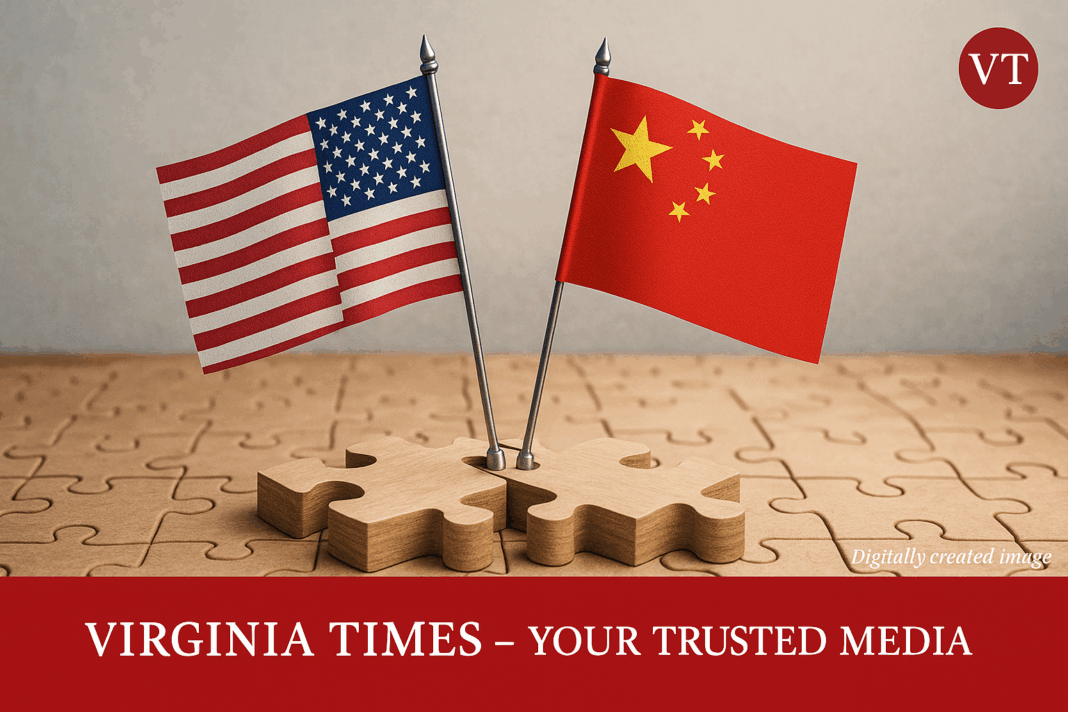GENEVA — The United States and China have agreed to a 90-day suspension of selected tariff increases, following two days of closed-door negotiations held in Geneva, Switzerland. The breakthrough was confirmed in a joint statement released by the White House on May 12, and separately reported in detail by Xinhua News, China’s state media outlet.
The high-level talks were led by U.S. Trade Representative Jamieson Greer, U.S. Secretary of the Treasury Scott Bessent, and Chinese Vice Premier He Lifeng, and marked the most substantial progress in bilateral trade relations since the flare-up of reciprocal tariff escalations in early April.
What Has Been Agreed
According to the official White House joint statement, both nations have committed to the following actions by May 14, 2025:
- The United States will suspend 24 percentage points of the additional ad valorem tariff imposed under Executive Order 14257, retaining only a 10% base tariff on designated Chinese imports, including goods from Hong Kong and Macau. It will also fully remove tariffs introduced via Executive Orders 14259 and 14266 in early April 2025.
- China, in a mirrored response, will suspend 24 percentage points of tariffs enacted under State Council Announcement No. 4, maintaining a 10% tariff on applicable U.S. imports. Additionally, China will revoke tariffs introduced in Announcements No. 5 and 6, and will suspend all non-tariff countermeasures that were enacted since April 2, 2025.
The agreement applies for an initial 90-day period and is seen as a confidence-building measure intended to cool rising trade tensions and pave the way for further negotiations.
Framework for Future Talks
The statement also established a mechanism for continued economic and trade discussions, led by Vice Premier He Lifeng for China, and by Greer and Bessent on the U.S. side. Meetings may alternate between the United States, China, or a mutually agreed third country. Both sides may also conduct working-level consultations on specific issues.
Official Reactions
The Chinese side emphasized the diplomatic tone of the meeting, calling the two-day discussion “candid, in-depth, and constructive,” according to Xinhua News. The report noted that the outcome reflects “substantive progress,” and sets the foundation for further narrowing differences between the two countries.
Xinhua added that the global implications of the resumed dialogue are significant: “This marked a crucial step toward resolving differences through equal dialogue and consultation,” it reported, emphasizing the importance of cooperation between the two economies, which together account for over a third of global output and one-fifth of global trade.
Geopolitical and Economic Context
The tariff escalation that began in early April 2025 had sparked concern from economists and international institutions, with the International Monetary Fund and the World Bank both warning that rising protectionism could harm the global recovery. Both U.S. and Chinese officials acknowledged these concerns.
Xinhua noted that American consumers and industries had also begun to feel the domestic pressure of rising import costs, while global supply chains were strained under the burden of competing tariff regimes.
By committing to dialogue and temporarily reducing tariffs, both sides have signaled a willingness to pursue cooperation over confrontation, even if long-standing disagreements remain over technology transfer, market access, and industrial subsidies.
Conclusion
The outcome of the Geneva meeting represents a diplomatic recalibration, not a final resolution. However, it marks a rare moment of alignment between the two powers amid an increasingly fractured global economic landscape.
Whether the momentum can be sustained beyond the 90-day pause remains to be seen, but for now, the world is watching with cautious optimism as the United States and China take the first steps back toward economic engagement.
A global media for the latest news, entertainment, music fashion, and more.















